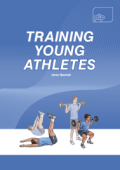Getting fit for Archery
2 Comments“Whatever’s wrong ain’t the bow and whatever’s right is the archer.”
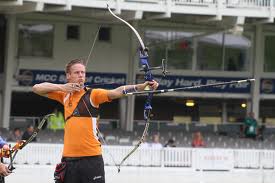 For the last 18 months I have been working alongside the Gloucestershire Archery Society and a number of local clubs as part of the.
For the last 18 months I have been working alongside the Gloucestershire Archery Society and a number of local clubs as part of the.
My role has included working directly with the young archers as well as workshops to help educate coaches and parents to apply the key principles for physical development.
LTAD
The emphasis of any of these sessions has been the Long term development of the athletes, and developing fundamental movement skills as a foundation on which to build.
Although Archers rarely have to run fast or lift heavy weights off the floor (despite what a job application for a recent position with high performing archers stated!), there are many physical abilities which are important for successful performance.
Mandigo et al., 2007 listed a number of fundamental movement skills, many of which can be directly linked to archery including:
1) Stability
- Balancing- maintaining centre of gravity above base of support
- Stretching-being able to efficiently hold different postures
- Twisting- rotating parts of upper body/ resisting rotation of torso
- Pushing- strengthening front shoulder
- Pulling (drawing)- strengthening rear shoulder during rotation
2) Locomotor
- Walking/Running-important for developing efficient aerobic system
- Jumping- developing lower body strength and stability
- Hopping- lower body stability and coordination
- Skipping- coordination and timing
- Climbing- increasing upper and lower body strength
3) Manipulative
- Throwing (over and under arm), Catching, Striking
- All good for improving hand-eye coordination and accuracy
 It is important to note that fundamental movement skills are the building blocks of sport skills, which is why these movements form the basis of the sessions for all of the archers I have worked with.
It is important to note that fundamental movement skills are the building blocks of sport skills, which is why these movements form the basis of the sessions for all of the archers I have worked with.
Despite varying broadly in terms of age and training experience, most of the athletes have developed deficiencies in mobility and posture due to the environment they find themselves in either at school hunched over a desk, or by regularly shooting (consistently using uneven posture).
A lot of emphasis during coach education sessions is on regularly practising exercises which will reinforce good posture, balance, stability and mobility to develop the Structural Integrity of the archers. This could include using exercises during warm ups or encouraging athletes to practice exercises away from training.
Cooperation in Coaching
I have been very fortunate to work with some fantastic coaches (Roger Crang, Steph and Dan Gill and Graham Williams to name a few) who have all bought into the need to develop physical skills as well as technical skills.
The Excelsior athletic development centre was set up to help young athletes by either working with them directly, or by running courses and workshops with the coaches, parents and teachers who are working with them week to week.
By working together with sports coaches, positive behaviours and habits can be constantly reinforced rather than competing with contradicting messages.
Click here for the full Archery Guide to Fundamental training
Matt Durber


 Easter saw the first Athlete Support Day
Easter saw the first Athlete Support Day  Power was the next topic, after discussing how we can improve power we went through building a solid foundation, where we challenged the athletes again to get out of their comfort zone.
Power was the next topic, after discussing how we can improve power we went through building a solid foundation, where we challenged the athletes again to get out of their comfort zone. 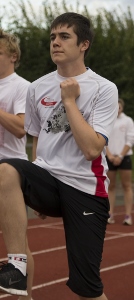 was the quote of the day from a 16 year old experienced competitor on our Athlete Support Day on Monday.
was the quote of the day from a 16 year old experienced competitor on our Athlete Support Day on Monday.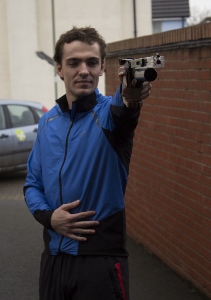 Sorry to disappoint Dr Who fans, this is about regenerating the body and mind after exercise and life. We have covered nutrition on other support days, this time we looked at the improtance of getting a good night’s sleep.
Sorry to disappoint Dr Who fans, this is about regenerating the body and mind after exercise and life. We have covered nutrition on other support days, this time we looked at the improtance of getting a good night’s sleep. That is what a lot of parents of young athletes feel like. Buffetted along the river of teenage years, carried by a current of car journeys,camps. training sessions, angry coaches, exams and hormones.
That is what a lot of parents of young athletes feel like. Buffetted along the river of teenage years, carried by a current of car journeys,camps. training sessions, angry coaches, exams and hormones.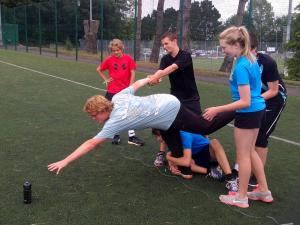 The last two sections of the day were getting the athletes running fast and exploring different ways of moving. Using principles I have learnt from
The last two sections of the day were getting the athletes running fast and exploring different ways of moving. Using principles I have learnt from  In this Olympic Year, I thought it would be a good idea to hear from coaches who have worked with developing athletes and their thoughts. Today
In this Olympic Year, I thought it would be a good idea to hear from coaches who have worked with developing athletes and their thoughts. Today 